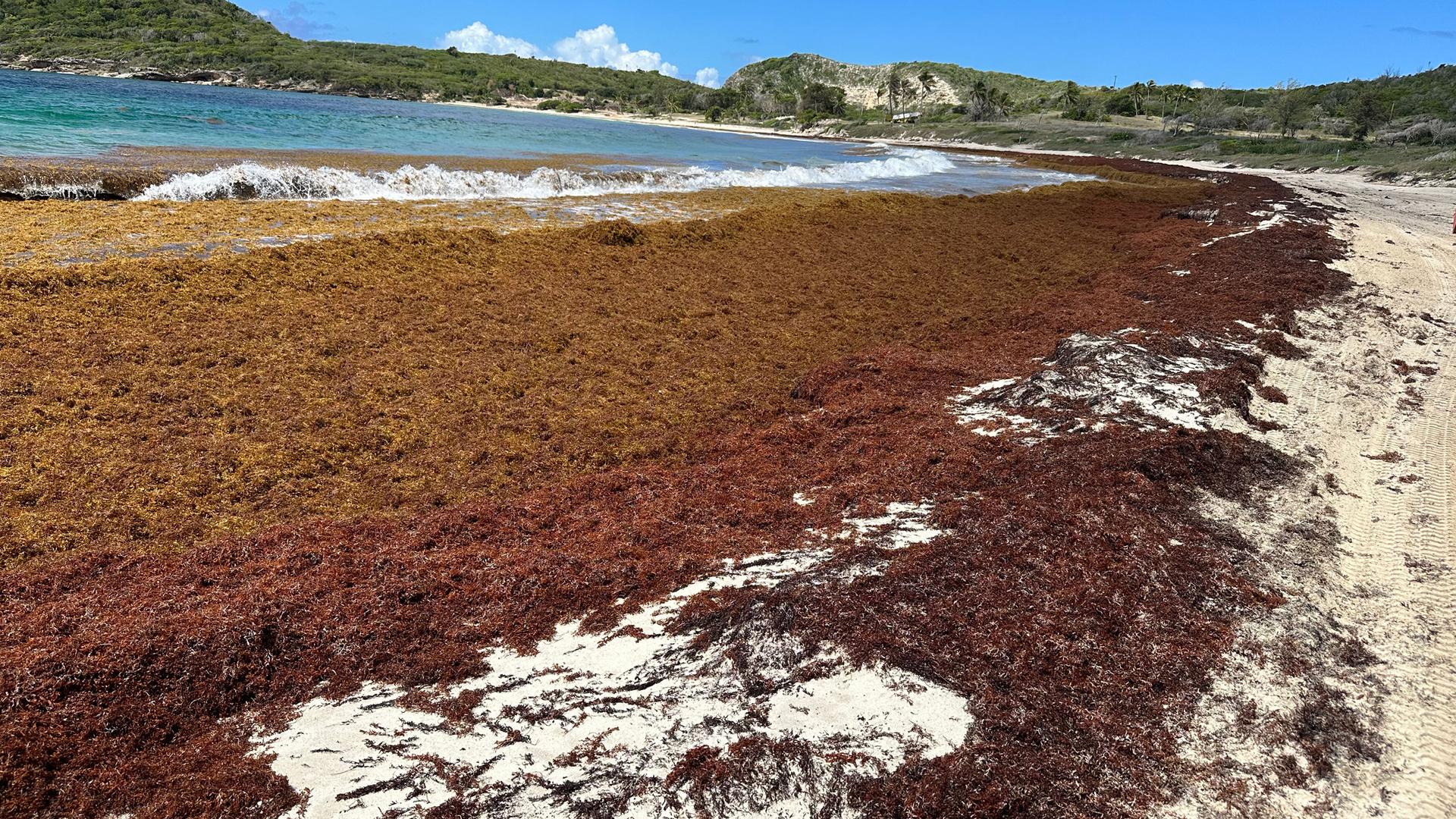Half Moon Bay is probably the most famous beach in Antigua and Barbuda. But on a gorgeous day in late May, it was completely empty. The only person on the sand was a tractor worker, removing sargassum, a type of seaweed that was covering the whole beach.
“We got to do what we got to do,” said Avery Henry, the owner of Beach Bum Bar and Grill, a restaurant right at the beach. “In Florida now they are crying, and we have been crying for ages. But now they are starting to feel what we are feeling.”
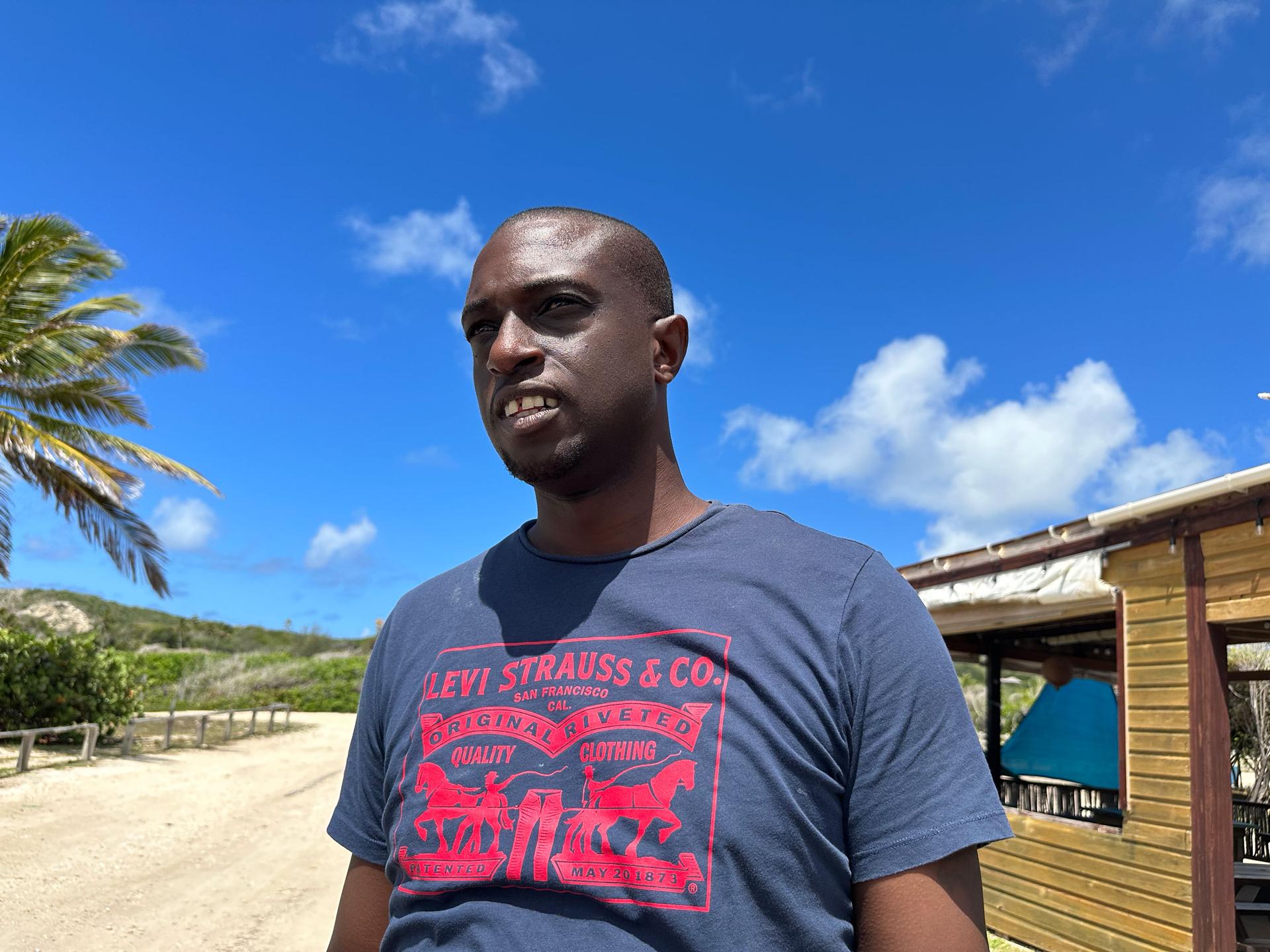
Those planning a Caribbean trip this summer better check the sargassum forecast. This seaweed has been growing in excessive amounts in the Caribbean since 2011, and now growing in Mexico and parts of Florida, as well. Earlier this year, scientists detected a record bloom.
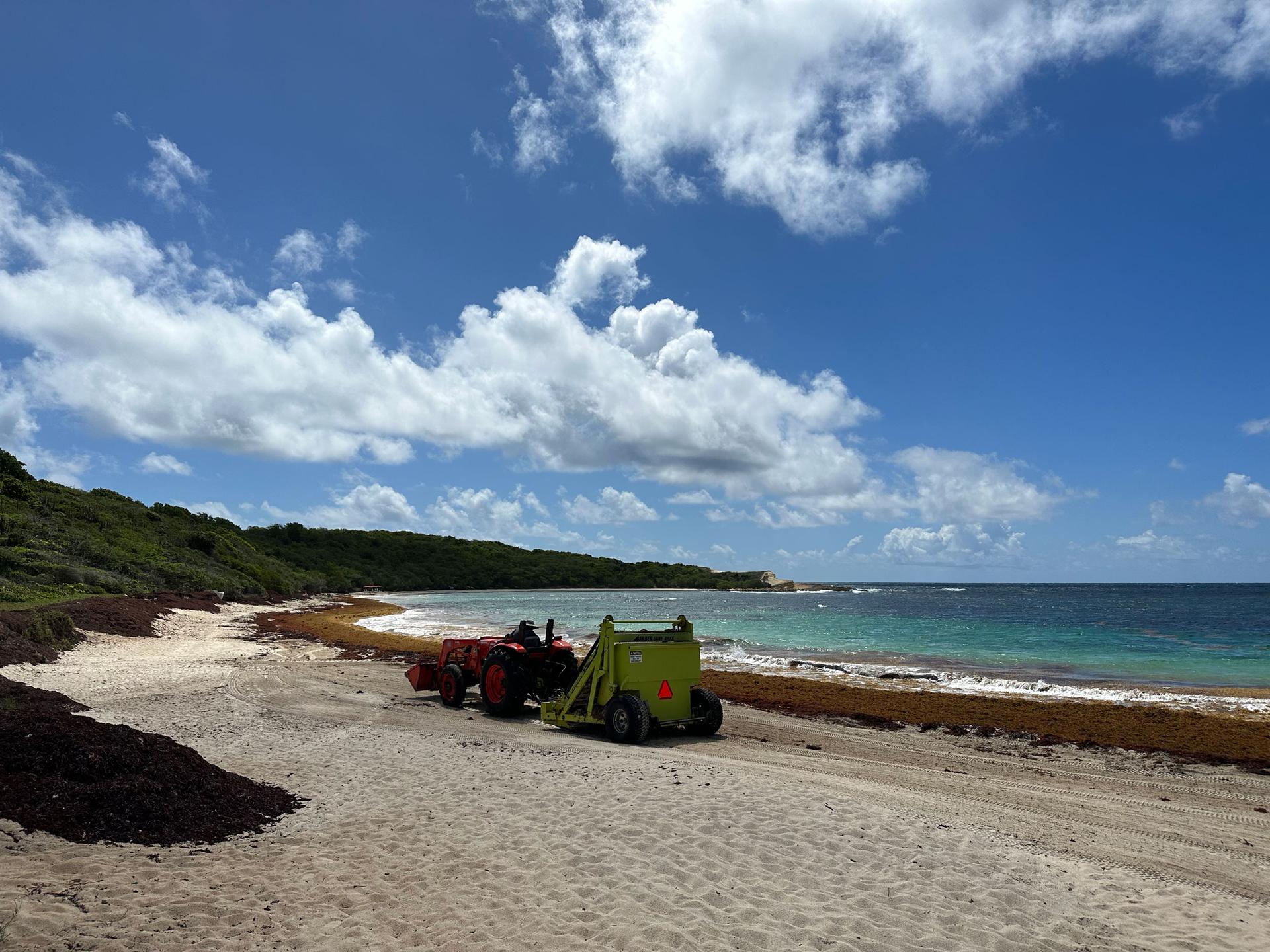
On many islands, locals like Henry have to cope with piles of the macroalgae on the sand — and its stinky smell — which sometimes leaves his restaurant totally empty. Tourists get here and turn around, he said, which is a huge contrast from a few years ago.
“At one point, Half Moon Bay was ranked top five in the world,” Henry said.
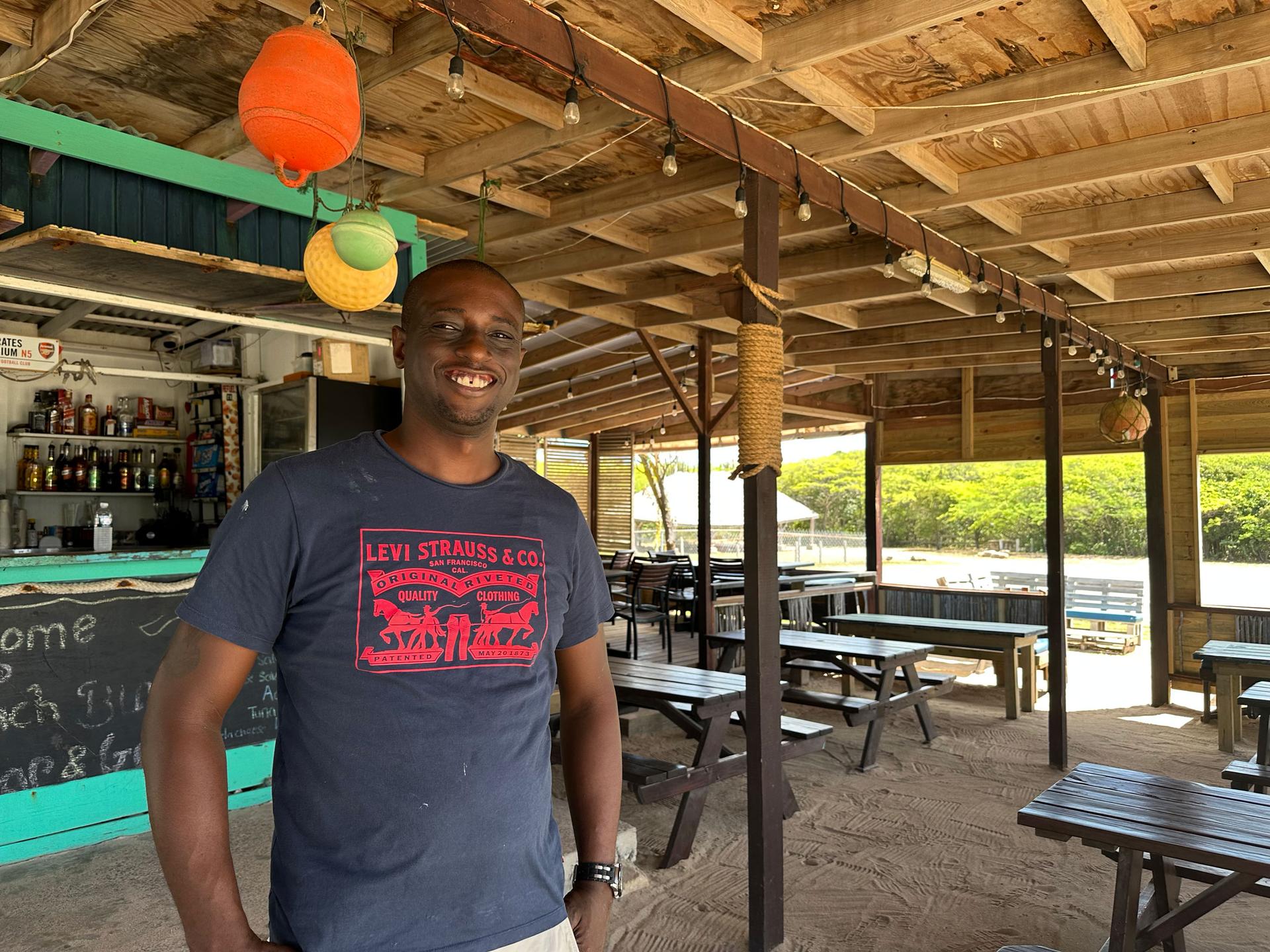
In the ocean, sargassum is an important nutrient for fish and other sea animals. The problem is when it gets to the beach. As it decomposes, it attracts bacteria and produces a gas that smells like rotten eggs.
Nobody is certain about what brought sargassum to the Caribbean 12 years ago, according to Chuanmin Hu, an oceanography professor at the University of South Florida. “As of today, it’s still a mystery,” he said. “But there are some hypotheses, some of which are more plausible than others.”
One viable hypothesis is that, in 2010, there was an ocean current much stronger than usual. It came from the northern Atlantic and pushed sargassum to the tropical Atlantic, where it found perfect conditions to grow. “Light, nutrients, temperature,” Hu said. “In the tropical Atlantic, everything is just right. So, we started to see more and more sargassum.”
Hu’s team detected a record amount of sargassum in the Caribbean in March.
“I was a little scared, because I know the worst is yet to come in the summer,” he said. The May report showed a drop, but Hu said sargassum is still going to be all over the Caribbean, Mexico and parts of Florida, particularly in June and July.
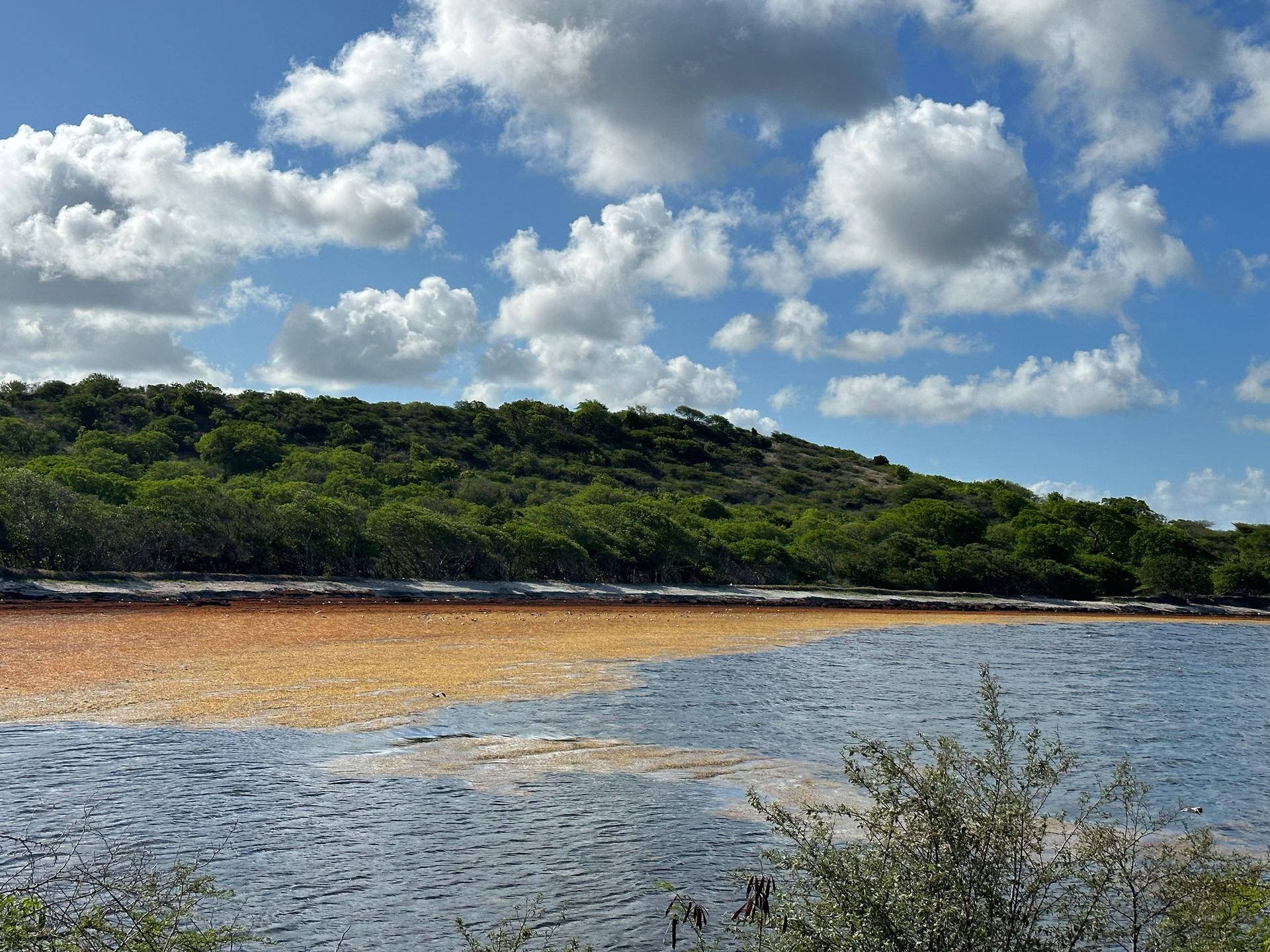
Local authorities can try to collect sargassum in the ocean using boats, he said, but that’s expensive.
“It’s hundreds of miles. It’s not just a local thing. So, there’s no way to stop this phenomenon in nature. This is just like, nobody can really stop a hurricane,” he said.
A few miles from Half Moon Bay, another beach on the island of Antigua was sargassum-free last month.
Fabio Giorgi, the general manager of The Inn at English Harbor, said that at this beach, Freeman’s Bay, it only comes about three times a year.
“You can see even today, there is some out there, there is some brown,” he said, pointing to dark puddles in the ocean. “But they don’t come in, they keep going up, so we are lucky.”
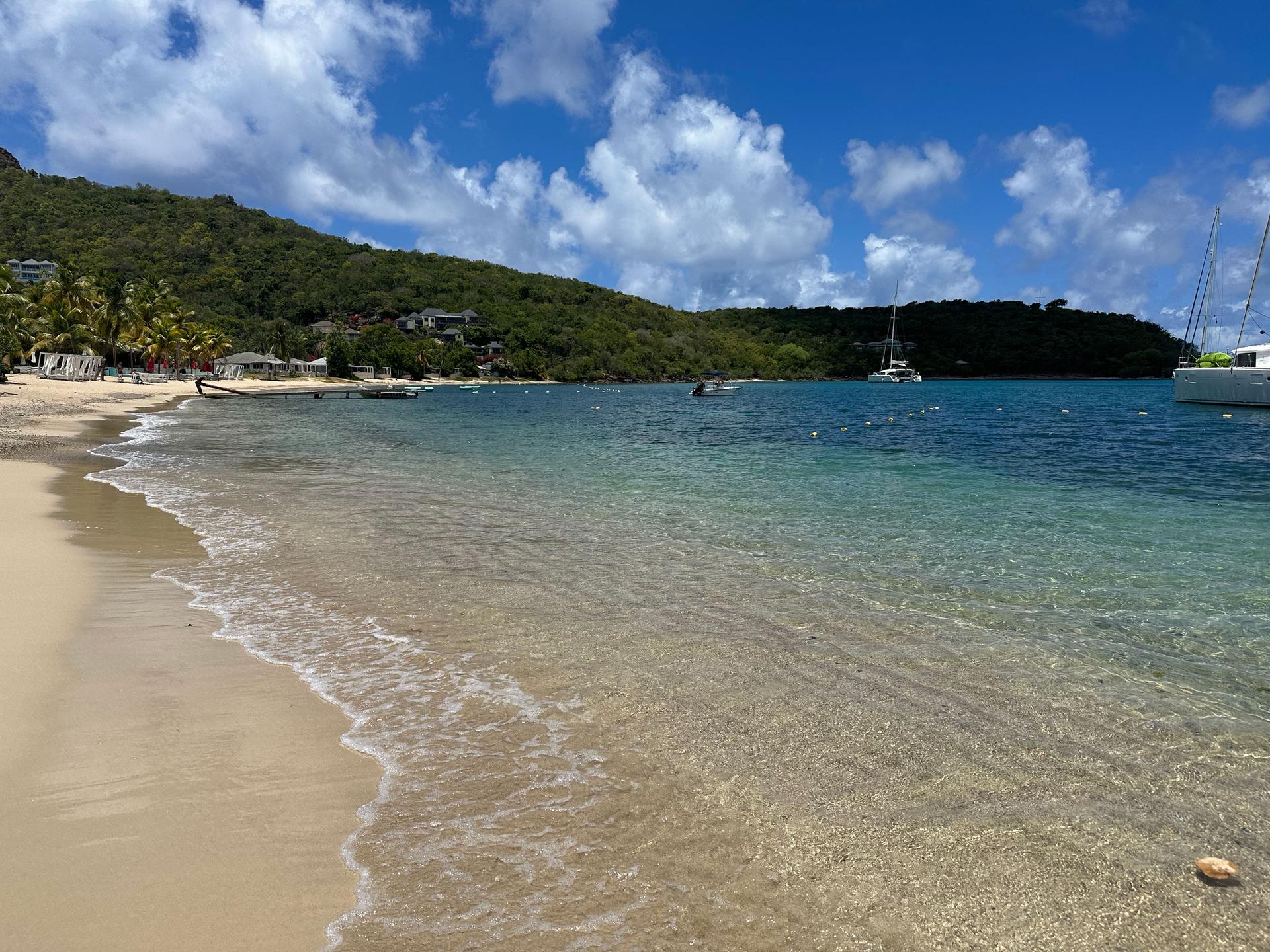
When the seaweed does come in, Giorgi said, they can call the environmental department to do the cleaning, but they take care of it themselves. The process takes about three days.
“We clean, but there is still some in the sea when that happens, so then you need to wait until the next day for them to come up,” he said.
While the sargassum keeps coming, local communities are also finding new uses for it. According to Hu, it can be used as fertilizer, and other things.
“A lot of people make bricks, construction material from sargassum, and they make shoes, or even clothes,” he said.
Hu said there might be some pharmaceutical use for sargassum as well, but research is in development.
But for most of the Caribbean, there is still no remedy for it.
